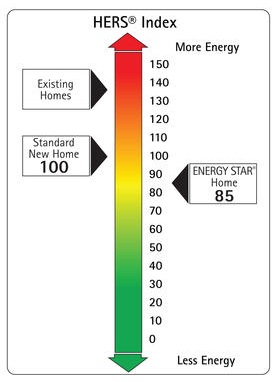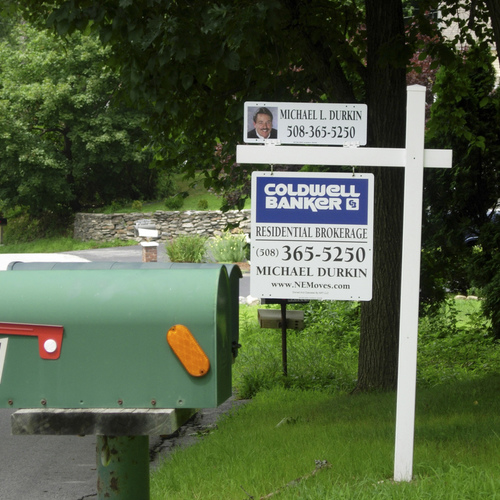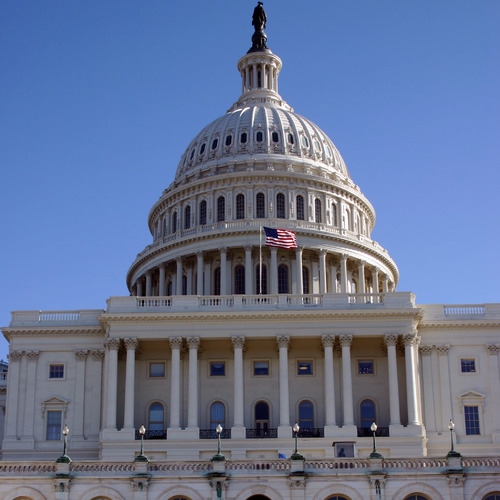
Image Credit: Residential Energy Service Network
It’s a little early to start high-fiving, but there are at least a couple of signs that longstanding approaches to mortgage underwriting and property appraisals might eventually begin factoring energy performance into valuations.
One source of change in that direction is an addendum to the standard Fannie Mae Form 1004 used for residential appraisals. Issued by the Appraisal Institute, the addendum lists items that would be eligible for consideration within the appraised value of a property, including insulation systems (their type, location, and R-value); water efficiency systems; daylighting features; appliance performance ratings; average utility costs; energy audit data; photovoltaic systems; LEED for Homes and National Green Building Standard certifications and scores; and government incentives that may have been applied to the purchase or installation of the property’s energy efficiency systems.
Another, more sweeping, initiative, designed to reckon energy efficiency performance with mortgage underwriting, is the Sensible Accounting to Value Energy Act of 2011 (S.1737), introduced on October 19 by Senator Michael Bennet, Democrat of Colorado and Senator Johnny Isakson, Republican of Georgia. The SAVE Act, as it is known, would require that home energy costs be factored into the formula for determining a home’s overall value and the prospective homebuyer’s eligibility for a loan.
A HERS rating and mortgage underwriting
The preferred tool for estimating energy costs is Residential Energy Service Network’s Home Energy Rating System, although the law would allow other suitable third-party methods to be used (alternative methods must be approved by the Department of Housing and Urban Development, in consultation with the Department of Energy).
The Alliance to Save Energy – a coalition of industry, government, and consumer interests – points out that under the SAVE Act a seller whose home is rated as 30% more energy efficient than a comparably sized home built to barely meet the 2006 International Energy Conservation Code would see about $10,000 added to its appraised home value. And while this higher price would seem to push prospective buyers closer to their loan-eligibility limit, the energy efficiency of the house in this example, the ASE notes, could actually work in the buyers’ favor, since it would reduce the home’s projected annual energy costs by about $700. Under the SAVE Act, those projected energy savings would be among the debt-to-income factors used in determining whether prospective buyers qualify for a loan.
SAVE Act requirements would apply to loans backed by Fannie Mae, Freddie Mac, and the Federal Housing Administration.
Modeling the potential effects of the law
Endorsed by the Appraisal Institute, the U.S. Chamber of Commerce, the U.S. Green Building Council, and the Natural Resources Defense Council, the SAVE Act is touted as a potential driver of growth in retrofit and homebuilding sectors focused on energy efficiency. The American Council for an Energy-Efficient Economy, for example, estimates that, because the law would allow homeowners to recover the cost of energy efficiency improvements upon the sale of their homes, its enactment could create 83,000 jobs by 2020 and reduce energy costs for single-family homeowners by $1.1 billion annually.
When it comes to increasing the number of energy efficiency upgrades, ACEEE estimates don’t show huge market penetration overall – 0.01% in 2013 (about 8,600 home upgrades annually) and about 0.7% by 2020 (about 650,000 upgrades annually) – but enough to slowly nudge up employment numbers in the retrofit and homebuilding categories. The analysis assumes a 15% average energy savings per home and about $5,000 in renovation costs per project.
Weekly Newsletter
Get building science and energy efficiency advice, plus special offers, in your inbox.















4 Comments
MPG Sticker For Homes
This legislation really makes a lot of sense, a purchase as large as a house deserves full disclosure, including previous energy bills. A rating for energy efficiency should be part of the building valuation.
Buried the lead (LEED?)
Richard, you buried the lead in this story. The SAVE Act should be headlined. And it would also been nice to see GBA comment on the Act, maybe even the curmudgeon could weigh in. The fact that it has support from both the left and the right makes it significant. The fact that the Leading Builders of America are supporting but NAHB is silent is significant. The fact that the National Association of Realtors is officially neutral but seen to be opposed behind the scenes is significant. The fact that NAR and NAHB are strategic lobbying partners on many other issues is signifcant. The fact that we are talking about potentially trading jobs, many jobs, (new home construction and remodeling) for saving a commission (exisitng home sales) is significant. Green Building ADVISOR means givng advice. The advice is to urge your Congressional Delegation, especially the Republicans, to pass this bill and get the homebuilding industry back to work building energy efficient homes. Start waving the flag boys, this one is BIG!!!
Whisper it? from the mountain tops!
Thanks Richard! Yes. This one is a big deal! and we need some major support from our Senators (mine especially, and we're working on that). While I'm telling everyone I see about this, in a way, I almost don't want to hype this too much. Right now it's a bipartisan bill on a non-partisan issue. It's all carrot and no stick. As long as it remains out of the game of political football, it should pass as a great common sense bill that would be exemplary of a properly functioning congress. So please, as you ask your delegates to support this bill (and you should) tell them how awesome it is to see them working with the other side in such a fantastically constructive way.
Then tell every builder, designer, appraiser, banker, real estate agent, politician, friend, family member and acquaintance what a great bill this is!
Chris Briley, Architect
I do not support the Monopoly
QUOTE: "The preferred tool for estimating energy costs is Residential Energy Service Network’s Home Energy Rating System, although the law would allow other suitable third-party methods to be used (alternative methods must be approved by the Department of Housing and Urban Development, in consultation with the Department of Energy)."
For the building energy efficiency movement to be a successful self perpetuating industry we need to address the Rem Rate - HERS rating monopoly soon.
Any suggestions on another over the over the counter modeling software with a DOE approved HERS ratings?
Log in or create an account to post a comment.
Sign up Log in